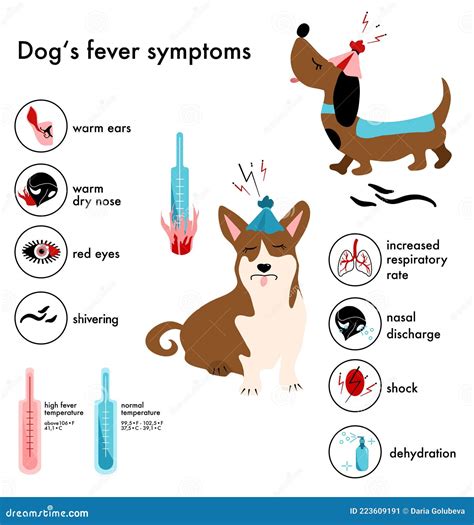How to Tell if Your Dog Has a Fever: A Comprehensive Guide
Is your furry friend acting a little off? Lethargy, loss of appetite, and unusual behavior can all point to a potential problem, and sometimes, that problem is a fever. Knowing how to identify a fever in your dog is crucial for their health and well-being. This guide will walk you through the signs and symptoms, providing you with the knowledge to act quickly and effectively.
Understanding Canine Fevers
Unlike humans, you can't simply take your dog's temperature with a standard thermometer under the tongue. Dogs require a different approach. A fever in dogs, medically defined as hyperthermia, means their body temperature is higher than normal. A normal canine body temperature ranges from 100.5°F to 102.5°F (38°C to 39.2°C). Anything above this range suggests a potential fever.
Common Signs and Symptoms of a Fever in Dogs:
- Lethargy and Weakness: This is often one of the first signs. Your dog might be unusually tired, sleeping more than usual, and lacking their normal energy levels.
- Loss of Appetite: A decreased or complete loss of interest in food is a common indicator of illness, including fever.
- Increased Thirst: A dog with a fever may drink more water than usual due to dehydration.
- Shivering or Tremors: While often associated with cold, shivering can also be a symptom of fever. Look for persistent trembling, even in a warm environment.
- Red or Runny Nose: Nasal discharge can accompany a fever, indicating a potential infection.
- Vomiting or Diarrhea: These gastrointestinal issues frequently accompany fever and can lead to dehydration.
- Rapid Breathing or Panting: Increased respiratory rate is the body's attempt to cool down. Observe your dog's breathing pattern carefully.
- Hot to the Touch: Gently feel your dog's nose and ears. If they feel significantly warmer than usual, it could indicate a fever. However, this is not a reliable method for accurate diagnosis.
- Muscle Aches: Although difficult to detect, your dog may exhibit signs of discomfort or stiffness.
How to Take Your Dog's Temperature (Safely!)
While feeling your dog's nose and ears can offer a clue, it's not accurate enough for diagnosis. You'll need a rectal thermometer, which is specifically designed for this purpose. Always lubricate the thermometer generously before insertion to prevent injury. Only insert the thermometer about an inch.
Steps to Take Your Dog's Temperature:
- Gather supplies: You'll need a rectal thermometer (preferably digital for ease of reading) and some lubricating jelly (petroleum jelly is fine).
- Position your dog: Have someone hold your dog securely, calming them if necessary.
- Lubricate the thermometer: Apply a generous amount of lubricant to the tip.
- Insert the thermometer: Gently insert the lubricated thermometer about an inch into your dog's rectum.
- Wait for the reading: Follow the thermometer's instructions for how long to wait for an accurate reading.
- Remove and read: Carefully remove the thermometer and note the temperature.
Important Note: If you are uncomfortable taking your dog's temperature yourself, consult your veterinarian. They have the expertise and tools to provide an accurate reading.
When to See a Vet
If you suspect your dog has a fever, do not delay seeking veterinary attention. A fever is often a symptom of an underlying illness, which needs professional diagnosis and treatment. Especially if accompanied by any other symptoms listed above, contact your veterinarian immediately. Prompt veterinary care is crucial for your dog's health.
Preventing Future Fevers
While you can't completely prevent all illnesses, maintaining your dog's overall health through proper diet, exercise, vaccinations, and regular vet checkups significantly reduces the risk of illness and fever.
By understanding the signs, symptoms, and how to take your dog's temperature correctly, you can be a more proactive and informed pet owner, ensuring your furry friend receives the best possible care.
